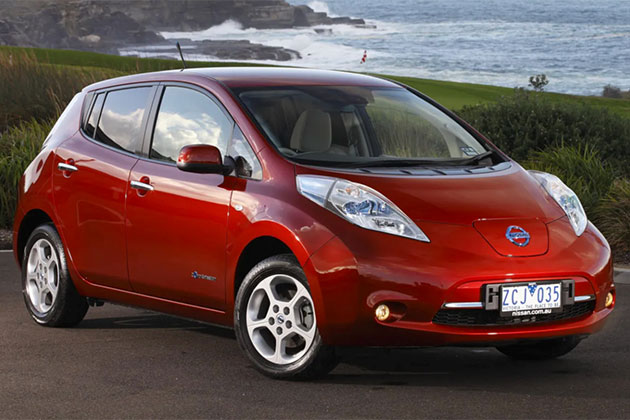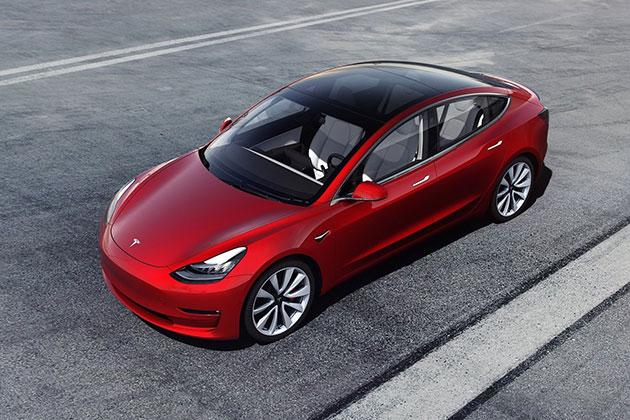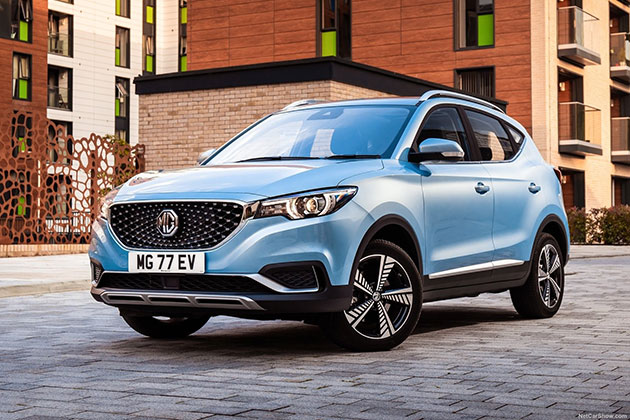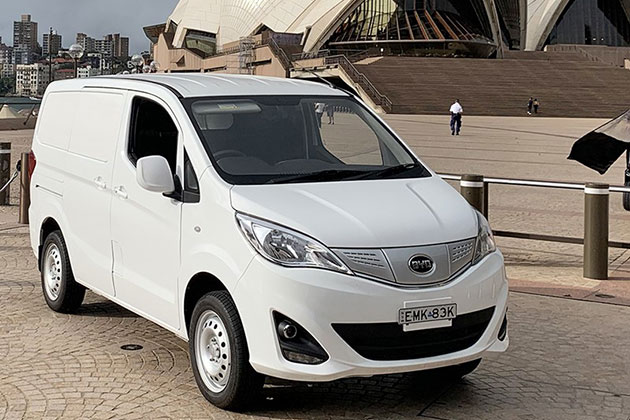By: Byron Mathioudakis
Many people love the idea of driving a pure electric vehicle (EV).
Silent, smooth and clean, their feel-good factor alone gets some drivers excited about making the switch to the joys of going fully electric.
While EVs are slowly gathering lots of fans, the vehicles themselves can still be $20,000 more expensive than their internal combustion engine (ICE) equivalents.
Additionally, the rebates, discounted registration, tax breaks, subsidised or free parking and other incentives offered elsewhere in the world and in most states in Australia to get people behind the wheel of an EV are severely lacking in WA.
But there are some options for getting into a cheaper EV, starting with a look at the used market.
RELATED:
Electric cars available in Australia in 2022 »
RELATED: Hybrid cars available in Australia »
Finding a used electric car
Choice and supply are still extremely limited in the second-hand EV space.
There just hasn’t been that many electric models released and sold in Australia over the past decade.
This year has been the best-ever for new EV sales, but they only represent some 1.3 per cent of the total market – or just 7,248 registrations – over the first six months of 2021. Unsurprisingly, at the time of writing, there were just over 350 used EVs being advertised on carsales.com.au across the whole of Australia, encapsulating a dozen makes.
These low numbers, along with new EV stock shortages due to COVID-19-related production and supply issues, means used prices are currently higher than in ‘normal’ times.
The current market for used EVs
Why so few?
Factory-fresh EVs have only been available in Australia since 2010 – Mitsubishi’s i-MiEV city car was the first and it’s just nine years since the first Nissan Leaf launched.

Despite a lot of fanfare, both sold poorly due to high prices and their low range by today’s standards (fewer than 100km in a mix of urban and freeway real-world driving). Along with a handful of Lotus Elise-based Tesla Roadster sports cars, these are regarded as the first phase of EVs locally.
The second was led by Tesla and BMW; both launched in 2014 with the Model S luxury grand tourer and i3 urban hatchback respectively. While the i3 focused on design, the Model S was the real game changer, offering an unheard-of 400km (or more) of range, unshackling the EV from city limits, while providing breathtaking performance. A three-row SUV version called the Model X from 2016 – with gullwing-style doors and a cavernous interior – brought in a new dimension in EV practicality.
But it was Hyundai later in 2018 that achieved what Nissan’s first Leaf struggled to do: offer a comparatively affordable mainstream EV in the Ioniq Electric, with around 250km of real-world range and sub-$50,000 pricing. Renault also got into the act with the Zoe supermini and the Kangoo van, although their limited (circa 120km) real-world range short-circuited their appeal. Still, the latter is a rare example of an electric commercial vehicle on the used market.
Also arriving in 2018, British sports/luxury brand Jaguar ushered in the futuristic I-Pace – a compact SUV with striking design and nearly 300km of real-world range. It was joined a year later by the Mercedes-Benz EQC that also cost about $150,000. More importantly, at that time, Nissan tried again with the improved, restyled Leaf II, with much greater success, followed by the Hyundai Kona Electric small SUV that boasted over 400km of distance between recharges.
However, these all pale in comparison to 2019’s other great EV debut, the Tesla Model 3, which pushed the envelope with up to 550km of range, from just over $66,000. It’s now history’s best-ever selling EV, and Australia’s favourite by far.

Finally, in 2020, three more EVs landed, spanning the price spectrum: the $44,000 MG ZS EV small SUV (with over 300km of range), Audi e-tron medium SUV averaging about $150,000 and 350km real-world range, and the high-performance Porsche Taycan offering 400km-plus between recharges from over $200,000.
The EV rollout now seems to multiply on an annual basis –2021 has already seen the Kia Niro EV, Mini Cooper SE, Mazda MX-30e, and Mercedes EQA, with the Volvo XC40 Recharge, Polestar 2, Tesla Model Y, Audi e-tron GT, BMW iX3, Hyundai Ioniq 5, Kia EV6 and others due by the end of 2021. It’s an electric groundswell.
So, how are the 2010 to 2020 used EVs performing on the market? Let’s find out.
Used EVs – up to $10,000
As you’d expect given its age, Mitsubishi’s i-MiEV can be had for under $10,000 nowadays, with higher-mileage examples dropping below $7,500.
$10,000 to $20,000
The original Nissan Leaf spans the $12,000 to $20,000 mark for Australian-delivered 2012-plated ZE0 models, depending on kilometres travelled. Keep in mind these are almost 10 years old now. You’ll need up to about $28,000 for the later, privately-imported AZE0 models.
$20,000 to $40,000
Currently sitting from the mid-$20,000 to $40,000 mark is the Renault Kangoo van, with the odometer reading likely to be somewhere between 20,000km and 80,000km according to what’s been advertised. These are workhorses, so be especially diligent to spot signs of wear and tear.
If you don’t mind higher mileage examples, the BMW i3 EV kicks off from the $30,000 mark, as do the myriad privately-imported current-generation Nissan Leaf II (ZE1) examples from 2016 to 2018.
Scraping in, too, is the near-new MG ZS EV, along with the 2019/20 pre-facelift Hyundai Ioniq Electric.

$40,000 to $60,000
This is the realm of near-new or demonstrator Australian-delivered Nissan Leaf IIs with low kilometres, along with the excellent Hyundai Ioniq Electric Series II – which, unlike the first one or any Leaf for that matter, gained water cooling for the battery pack for improved efficiency and longevity.
Starting from $45,000, the Hyundai Kona Electric is perhaps the bargain buy at this price point, since it can achieve Tesla-rivalling range, so is more useful for rural or country drivers. Later-build (2017-19) BMW i3 examples are also hovering around the $50,000 mark, though the sportier i3s is still closer to $60,000.
$60,000 to $80,000
Early 2019 Tesla Model 3s are about to dip below $60,000 depending on how optioned up they are, accompanied by the Mini Cooper SE, Hyundai Kona Electric and BMW i3s, though newer examples are still above $65,000.
This is also the starting point of the Model 3’s larger (and some say more beautiful) Model S sibling from 2014-onwards, taking in early base-specification examples with high kilometres.
$80,0000 to $130,000
With their relative newness, you’ll need at least $100,000 for a used Jaguar I-Pace or Mercedes EQC, while the newer Audi e-tron is edging down under $130,000 in some cases. Later Tesla Model S examples, though, are often beyond $130,000.
Like we said, the used EV market is holding very firm at the moment.
With so few actual used EVs on sale (about 350 at the time of writing nationally, and just 10 per cent of that in WA), it can be difficult to get a handle on EV values. As a result, and with all used vehicle purchases, don’t be afraid to haggle.

The pros of buying a used EV
- They emit fewer harmful emissions from the tailpipe than ICEs and are overall better for our health and the environment.
- They’re cheaper than buying new.
- Fewer moving parts in EVs means cheaper servicing and less wear and tear.
- Brakes often have less of a ‘workout’ as the electric motors do much of the stopping.
RELATED:
Myths and misconceptions about electric cars »
Some things to consider
- You may want to buy an at-home charger, which can cost up to $1000-plus.
- Battery capacity degrades over time, and combined with high mileage, this means that you won’t have the range of an equivalent new model. A good way to check before you buy is to ensure the battery is fully charged, take it for a long test drive and then compare that with the indicated remaining range. If there’s a big discrepancy, the battery may be in trouble.
- Some EVs have a dash-mounted light bar indicating the charging capacity of the battery. If that drops below 80 per cent, either haggle on the price or look elsewhere.
- If required, replacing EV batteries can be expensive, with some of the bigger-capacity batteries costing tens of thousands of dollars, which might be more than the used EV is worth. Note that most manufacturer warranties run out at eight years or 160,000km. The likelihood of needing a replacement battery depends on a number of factors, such as the quality of the battery and the driving environment.
- Check that all the charging cables are present and working – replacements can become costly.
- Most of the used EVs in Australia are older and thus offer a much lower range (even when new) compared to more contemporary models. Older also means less advanced safety features.
The cheapest new EVs (under $60,000)
While it’s true that the price gap between EVs and ICEs is closing – to the point where some automotive analysts are predicting price parity by 2025 due to hugely increasing demand and the growing economies of scale that inevitably makes goods and services less expensive – going second-hand remains the cheapest way to buy electric.
Still, a growing number of comparatively affordable new EVs have or are just about to launch in Australia. And while under $60,000 isn’t cheap in many peoples’ mind, at least they’re more affordable than ever before.
The newest, by the way, is the Chinese brand Build Your Dreams (BYD), recently announcing pricing for the e6 wagon and T3 two-seater van. Australian deliveries are expected by the end of this year.

The least-expensive new EVs available in Australia right now
| BYD T3 Van | $34,950 |
|---|---|
| BYD e6 | $39,999 |
| MG ZS EV | $44,990 (driveaway) |
| Hyundai Ioniq Elite | $49,970 |
| Nissan Leaf | $49,990 |
| Renault Kangoo Maxi ZE | $50,290 |
| Hyundai Ioniq Premium | $54,010 |
| Hyundai Kona Electric Standard Range Elite | $54,500 |
| Mini Cooper SE | $55,650 |
| Hyundai Kona Electric Standard Range Highlander | $54,500 |
| Tesla Model 3 Standard Range Plus RWD | $59,900 |
Considering an EV? Get a discount on your car loan interest rate. Get 0.50% p.a. off your car loan interest rate when you buy an electric vehicle. T&Cs: Discount applies to fully electric new and used vehicles, excludes Hybrid vehicles. Offer is subject to RAC Finance Lending Terms and Conditions. Fees and charges apply. Australian Credit Licence 387972.
Last updated: September 2021
